
Suspended: A Cryogenic Nightmare is an interactive fiction video game written by Michael Berlyn and published by Infocom in 1983. Infocom's sixth game, it was released for Amstrad CPC, Apple II, Atari 8-bit family, Commodore 64, Commodore Plus/4, IBM PC, TRS-80, and TI-99/4A. It was later available for Macintosh, Amiga, and Atari ST.

Star Raiders is a space combat simulator video game created by Doug Neubauer and published in 1980 by Atari. The player assumes the role of a starship fighter pilot, who must protect starbases from invading forces called Zylons. Piloting and combat are shown in the 3D cockpit view, while a 2D galactic map shows the state of the Zylon invasion. Neubauer made the game during in his spare time at Atari, inspired by contemporary media such as Battlestar Galactica and Star Wars, as well as the 1971 mainframe game Star Trek. Originally released on the Atari 400/800 computers, Star Raiders was later ported to the Atari 2600, Atari 5200, and Atari ST.

Missile Command is a 1980 shoot 'em up arcade video game developed and published by Atari, Inc. and licensed to Sega for Japanese and European releases. It was designed by Dave Theurer, who also designed Atari's vector graphics game Tempest from the same year. The game was released during the Cold War, and the player uses a trackball to defend six cities from intercontinental ballistic missiles by launching anti-ballistic missiles from three bases.
World of Darkness is a series of tabletop role-playing games, originally created by Mark Rein-Hagen for White Wolf Publishing. It began as an annual line of five games in 1991–1995, with Vampire: The Masquerade, Werewolf: The Apocalypse, Mage: The Ascension, Wraith: The Oblivion, and Changeling: The Dreaming, along with off-shoots based on these. The series ended in 2004, and the reboot Chronicles of Darkness was launched the same year with a new line of games. In 2011, the original series was brought back, and the two have since been published concurrently.
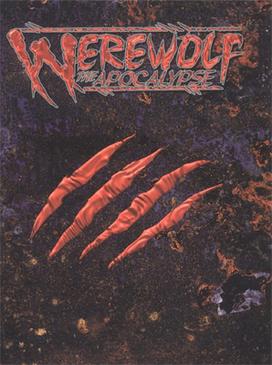
Werewolf: The Apocalypse is a role-playing game of the Classic World of Darkness game series by White Wolf Publishing. Other related products include the collectible card games named Rage and several novels. In the game, players take the role of werewolves known as "Garou". These werewolves are locked in a two-front war against both the spiritual desolation of urban civilization and supernatural forces of corruption that seek to bring the Apocalypse. Game supplements detail the other shape-shifters.

Choplifter is a military themed scrolling shooter developed by Dan Gorlin for the Apple II and published by Broderbund in 1982. It was ported to the Atari 8-bit family the same year and also to the VIC-20, Commodore 64, Atari 5200, ColecoVision, MSX, and Thomson computers.

Planetfall is a science fiction themed interactive fiction computer game written by Steve Meretzky, and the eighth title published by Infocom in 1983. The original release included versions for Apple II, Atari 8-bit family, TRS-80, and IBM PC compatibles. The Atari ST and Commodore 64 versions were released in 1985. A version for CP/M was also released. Although Planetfall was Meretzky's first title, it proved one of his most popular works and a best-seller for Infocom; it was one of five top-selling titles to be re-released in Solid Gold versions including in-game hints. Planetfall uses the Z-machine originally developed for the Zork franchise and was added as a bonus to the "Zork Anthology".
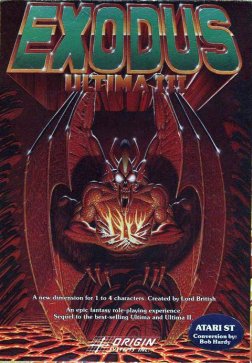
Ultima III: Exodus is the third game in the series of Ultima role-playing video games. Exodus is also the name of the game's principal antagonist. It is the final installment in the "Age of Darkness" trilogy. Released in 1983, it was the first Ultima game published by Origin Systems. Originally developed for the Apple II, Exodus was eventually ported to 13 other platforms, including a NES/Famicom remake.
An interactive film is a video game or other interactive media that has characteristics of a cinematic film. In the video game industry, the term refers to a movie game, a video game that presents its gameplay in a cinematic, scripted manner, often through the use of full-motion video of either animated or live-action footage.
A video game with nonlinear gameplay presents players with challenges that can be completed in a number of different sequences. Each player may take on only some of the challenges possible, and the same challenges may be played in a different order. Conversely, a video game with linear gameplay will confront a player with a fixed sequence of challenges: every player faces every challenge and has to overcome them in the same order.

The Prisoner is a 1980 Apple II computer game produced by Edu-Ware. The game was loosely based on the 1960s television series The Prisoner and incorporates that show's themes about the loss of individuality in a technological, controlling society. The player's role is that of an intelligence agent who has resigned from his job for reasons known only to himself, and who has been abducted to an isolated island community that seems designed to be his own personal prison. The island's authorities will use any means—including coercion, disorientation, deception, and frustration—to learn why their prisoner has resigned, and every character, location, and apparent escape route seem to be part of a grand scheme to trick the player into revealing a code number representing the prisoner's reason for resigning. The game occasionally breaks the fourth wall by acknowledging that a game is being played.
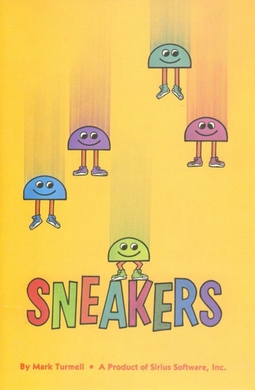
Sneakers is a fixed shooter video game for the Apple II written by Mark Turmell and published by Sirius Software in 1981. An Atari 8-bit family version was released the same year. Sneakers was Turmell's first published game. He later was the lead designer and programmer of 1993's NBA Jam.
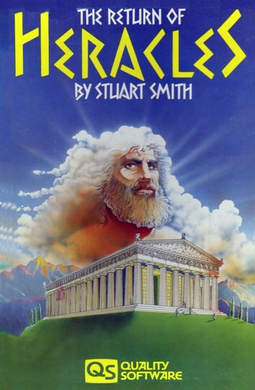
The Return of Heracles is a role-playing video game for the Atari 8-bit family, Commodore 64 and Apple II computers. It was written by Stuart Smith and published by Quality Software in 1983. Following Smith's adventure role playing games Fracas and Ali Baba and the Forty Thieves, and built on an engine that was a precursor to Adventure Construction Set, The Return of Heracles is set in the age of Greek myth and allows the player to assume the role of one or more heroes and attempt various quests.

Legionnaire is a computer wargame for the Atari 8-bit series created by Chris Crawford in 1982, and released through Avalon Hill. Recreating Julius Caesar's campaigns in a semi-historical setting, the player takes command of the Roman legions in real-time battles against the barbarians.

The Coveted Mirror is a graphic adventure for the Apple II published in 1983 by Penguin Software. It was created by Eagle Berns and Holly Thomason. A version with a more advanced text parser was released in 1986 and ported to additional systems.

Nine Princes in Amber is an interactive fiction video game with graphics. The game was published by Telarium, a subsidiary of Spinnaker Software, in 1985. The game is based upon the fantasy novels Nine Princes in Amber and The Guns of Avalon by Roger Zelazny.

Apventure to Atlantis is the sequel to Odyssey: The Compleat Apventure written by Bob Clardy and published by Synergistic Software in 1982.

Dnieper River Line is a 1982 video game published by The Avalon Hill Game Company.
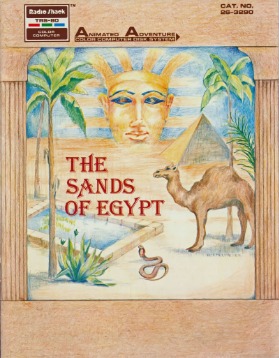
The Sands of Egypt is a 1982 graphic adventure game written by James Garon, Ralph Burris, and Steve Bjork of Datasoft for the TRS-80 Color Computer. It was licensed to Tandy Corporation and was the first disk-only game for the Color Computer sold by RadioShack. Ports to the Atari 8-bit family in 1982 and Apple II in 1983 were published by Datasoft. Set in 1893, the game follows a British explorer and archaeologist who is lost in the desert. Text commands are entered in the lower half of the screen, while a sometimes animated image of the current location is displayed in the upper half.

MBT is a board wargame published by Avalon Hill in 1989 that simulates hypothetical World War Three tank combat between NATO and Warsaw Pact forces in Western Europe. A second edition was published by GMT Games in 2016.

















